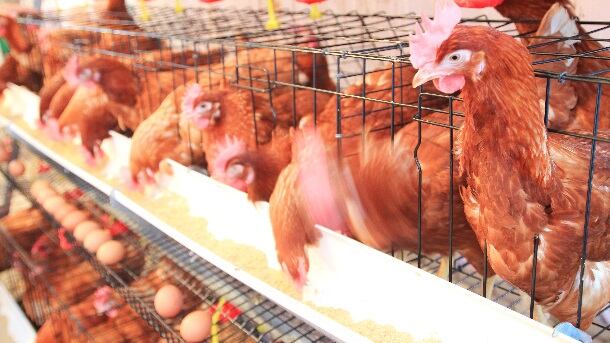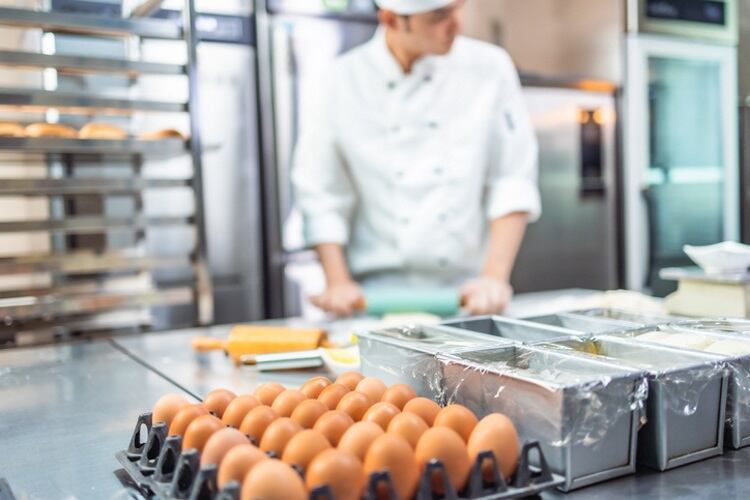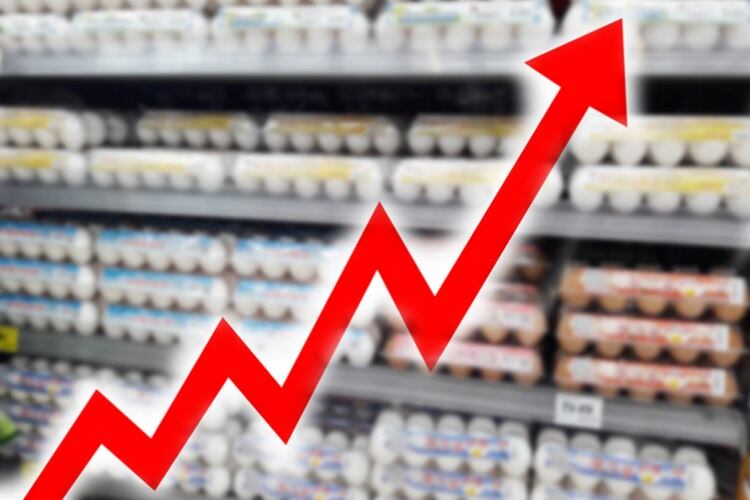US egg prices have increased by more than 60% over the past year, with supply chain constraints and declining poultry stocks exacerbating the issue. According to the USDA’s Agricultural Marketing Service, the national average for a dozen eggs reached $3.37 in October 2024, compared to $2.07 the previous year.
Major retailers, including Costco, Kroger, and Trader Joe’s, have implemented purchase limits on eggs due to limited stock, and in states like California, the combination of avian flu outbreaks and strict cage-free production mandates has worsened supply issues.
A global breakdown

As of February 2025, the global egg supply is significantly impacted by a resurgence of avian influenza (bird flu), leading to major egg shortages and price hikes in many countries. The situation is most critical in the United States, where large-scale culling of infected flocks has resulted in limited availability and record-high prices. Millions of egg-laying hens have been culled, and supply has struggled to recover.
Canada is experiencing price increases due to the global avian flu situation, as are some countries within the EU, but the impact is not as drastic as in the US. While not immune to the avian flu issue, China’s large domestic egg production may help mitigate some supply concerns. Meanwhile, the impact of the avian flu outbreak in Australia has been relatively contained compared to other regions.
Here’s why eggs are in short supply, what’s driving the price surge, and what lies ahead.
What’s driving the egg crisis?

A perfect storm of disease, rising costs, and increased demand has reshaped the market, leaving consumers and businesses scrambling for answers.
GLP-1 and eggs
The rise in GLP-1 weight loss medications has increased consumer demand for eggs.
“Sales of very salty snacks and sugary treats are down, whereas categories like eggs and other proteins as well as produce are seeing a pretty significant bump," noted Relex Solution's Amanda Oren.
Beyond disease outbreaks, inflation has further increased production costs, with higher prices for poultry feed, labour, and transportation contributing to egg price volatility. Global grain shortages have also raised feed costs, affecting both large-scale and independent egg farms.
Egg consumption has also steadily increased over the past two decades. According to United Egg Producers, per capita egg consumption has grown by approximately 4.8% since 2000, reflecting a rising preference for eggs as a versatile and affordable protein source. Additionally, the rise in GLP-1 weight loss medications, which promote protein-rich diets, has further increased consumer demand. “Almost 10% of adult Americans are taking some form of GLP-1, and it seems to be having a huge impact on what categories are selling,” said Amanda Oren, VP of Industry Strategy for Grocery in North America at Relex Solutions. “Sales of very salty snacks and sugary treats are down, whereas categories like eggs and other proteins as well as produce are seeing a pretty significant bump.”
The political blame game

As egg prices continue to strain businesses and consumers alike, the issue has become a political flashpoint. Lawmakers from both parties have used the crisis to critique their opponents, framing the shortage as a failure of policy rather than a complex supply chain disruption.
Democrats have pointed to President Donald Trump’s deregulation efforts and cuts to federal agricultural oversight during his previous term as contributing factors, arguing these measures weakened the nation’s ability to respond swiftly to outbreaks like avian flu. Critics claim that rollbacks in food safety and livestock disease monitoring may have left the industry more vulnerable to crises like the current egg shortage. Since returning to office, Trump has largely blamed the Biden administration for the crisis, particularly the USDA’s enforcement of mass culling policies that led to supply shortages. Critics argue that while controlling avian flu is essential, the administration should have acted faster to bolster domestic egg production and secure supply chains to mitigate the impact on businesses and consumers. Trump promised his administration would tackle the issue immediately if re-elected. “When I win, I will immediately bring down prices, starting day one,” he declared on the campaign trail.
The reality, however, is that the USDA’s strict culling policies predate both administrations and remain the primary measure for containing avian flu outbreaks. Approximately 130 million birds were culled under Biden’s presidency, according to the American Farm Bureau Federation. However, the same policy continues under Trump’s administration.
Meanwhile, industry leaders have called for bipartisan cooperation to implement long-term solutions, including improved disease monitoring and trade policies that would allow for poultry vaccination programmes without harming export markets.
Impact on the bakery sector

The egg shortage has significantly affected cost structures and production capabilities. Eggs play a crucial role in the texture, structure, and stability of many baked goods.
But with wholesale egg prices having surged by more than 187% since early 2024, many bakery operators have had to adjust their pricing models. Some businesses have opted for gradual price increases to offset rising costs, while others are exploring reformulated recipes that require fewer eggs or use alternative ingredients.
To navigate these challenges, bakeries should also consider:
- Reformulating recipes to reduce egg dependency by using alternatives like aquafaba (chickpea brine), flaxseed mixtures, and commercial egg substitutes.
- Expanding product lines to include more egg-free or vegan baked goods to appeal to a broader customer base.
- Partnering with local farms and alternative egg suppliers to secure a more stable supply chain and reduce dependency on major distributors.
- Enhancing communication with customers regarding the challenges posed by the egg shortage and its impact on product pricing and availability.
The timeline for price stabilisation remains uncertain. The USDA has revised its production forecasts for 2025, suggesting that a full recovery from current supply constraints may take longer than initially anticipated. Industry experts predict that while some market corrections may occur, the extent of price relief will depend on disease containment efforts, regulatory decisions, and supply chain improvements.
Some policy solutions under consideration include greater investment in biosecurity measures to prevent future avian flu outbreaks and increased federal support for small and mid-sized egg producers to ensure a more resilient supply chain. However, given the continued volatility in global agricultural markets, businesses will need to remain adaptable.
For bakeries, flexibility and strategic adaptation will be essential. Businesses that proactively explore ingredient alternatives, adjust their sourcing strategies, and manage cost fluctuations effectively will be best positioned to navigate the continued volatility in the egg market.



